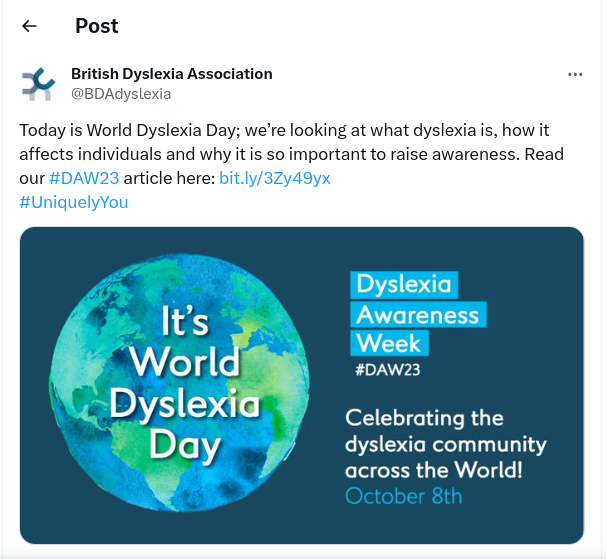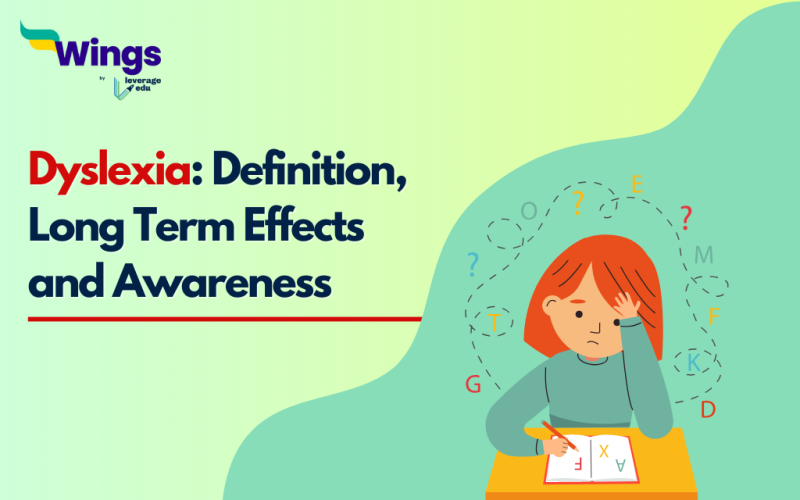You must remember “Taare Zameen Par” portraying the eventual success of dyslexic Ishan Awasthi after his artistic talents were discovered by his art teacher at the boarding school. The film hints at a neurocognitive phenomenon of creativity lying in the midst of a learning disorder, as exemplified in the lives of people like Albert Einstein, Stephen Hawking, Leonardo da Vinci, and Pablo Picasso who were dyslexic. Many people, usually the parents still neglect the existence of dyslexia. It is important for parents and teachers to recognize dyslexia and take appropriate steps to reduce its long-term effects. Continue reading this blog if you wish to learn about dyslexia, its long-term effects, and how teachers can help a dyslexic student.
Table of Contents
5 Child Prodigies Who Changed the World!
What is Dyslexia?
Dyslexia is a neurological condition that affects a person’s ability to read, write, and spell, despite having average to above-average intelligence. It is not related to intelligence or vision problems but rather involves difficulties in processing phonological information, which is the ability to recognize and manipulate the sounds of spoken language. Individuals with dyslexia may struggle with recognizing letters and their corresponding sounds, leading to difficulties in decoding words. This can result in slow and inaccurate reading, as well as challenges in understanding and retaining written information.
How Does Dyslexia Affect Student Learning in the Long Term?
In the long term, Dyslexia often impacts academic performance across various subjects that heavily rely on reading and writing skills. Difficulties in decoding words and recognizing spelling patterns can lead to slower reading speeds and comprehension. This makes it challenging to keep up with assignments and course materials.
Dyslexia may affect a student’s confidence and self-esteem, especially if they face struggles in comparison to their peers. This can lead to frustration, anxiety, and a reluctance to engage in educational activities. Without proper support and intervention, these negative and emotional effects can continue into adulthood.
However, it’s important to note that with proper strategies, resources, and instruction, individuals with dyslexia can overcome many of these challenges. Early detection and specific interventions can reduce the long-term effects, enabling students to develop effective reading and writing skills and achieve their full academic potential. Let’s not forget that many individuals with dyslexia have remarkable strengths, such as strong problem-solving abilities and creativity, which can be utilized to excel in various fields.
How AI Can Help in Education: Role and Challenges
How Teachers Can Help a Student with Dyslexia?
Here are five ways teachers can support students with dyslexia:
Use Multisensory Instructions
Provide instruction that engages multiple senses to support learning. For instance, using tools like letter tiles or sandpaper letters while teaching phonics allows students to feel and see the letters in addition to hearing them.
How to do it: When teaching the letter “b”, have students trace it on a textured surface while saying the sound “buh”.
Read more: Barriers of Communication
Try Structured Phonics Programs
Implement evidence-based phonics programs that systematically teach letter-sound relationships. These programs break down reading into manageable steps, providing explicit instruction in phonemic awareness and phonics skills.
How to do it: Utilize programs like Orton-Gillingham or Wilson Reading System that are designed specifically for students with dyslexia.
World Mental Health Day Activities for Students
Provide Clear Instructions
Give detailed and clear directions for assignments, tasks, and assessments. Break down complex tasks into smaller, manageable steps to reduce cognitive load.
How to do it: Instead of saying, “Write an essay about your favorite movie,” provide specific steps like, “First, write a paragraph about the main characters. Then, write a paragraph about the plot.”
You may also like to learn about Personality Development
Offer Assistive Technology
Use technology tools and resources that can support reading and writing. Screen readers, text-to-speech software, and speech-to-text tools can help students access and express information more effectively.
How to do it: Allow students to use text-to-speech software to read aloud passages from textbooks or assignments.
Don’t Forget to Read this Blog- Early Childhood Education
Encourage Self-Advocacy
Create a supportive and inclusive classroom environment where students feel comfortable asking for help. Encourage them to understand their learning style and advocate for the strategies that work best for them.
How to do it: Have regular check-ins with the student to discuss their progress and ask if there are specific techniques or accommodations that they find particularly helpful.
| Disclaimer: This is not a piece of medical advice, you may seek counselling if required. |
Want to Become a Special Ed Teacher? Read this blog- BEd in Special Education: Colleges, Syllabus & Scope to learn more.
Dyslexia Awareness Month 2023
World Dyslexia Awareness Day 2023 is observed annually on October 8th. The day is dedicated to raising awareness and understanding of dyslexia. Dyslexia affects reading, writing, and spelling abilities but does not lessen one’s intelligence or potential. This day aims to promote inclusivity, access to education, and the implementation of effective strategies to support students with dyslexia in their learning journeys.

Explore more topics to enhance your teaching methodology:
FAQs
Ans: Dyslexia is a neurological condition that makes it difficult for individuals to read, write, and spell proficiently, which can impact their academic performance in subjects that rely heavily on these skills.
Ans: Yes, with appropriate strategies, resources, and medical instructions, students with dyslexia can overcome challenges, develop effective reading and writing skills, and achieve their full academic potential.
Ans: Teachers can provide support through multisensory instruction, structured phonics programs, clear instructions, and assistive technology.
Follow Leverage Edu for more interesting and informative articles on school education.
 One app for all your study abroad needs
One app for all your study abroad needs















 25,000+ students realised their study abroad dream with us. Take the first step today.
25,000+ students realised their study abroad dream with us. Take the first step today.
